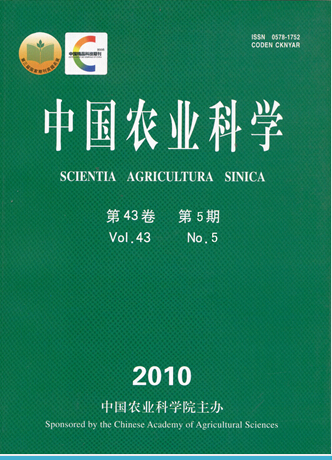【Objective】 The physiological and biochemical effect of electroacupuncture anesthesia combined with xylidinothiazoline in goats was studied in this paper. 【Method】 Thirty adult hybrid goats, weighting 22-27 kg, were divided into 0.5 mg•kg-1 xylidinothiazoline group, 2 mg•kg-1 xylidinothiazoline group, electroacupuncture combined with 0.5 mg•kg-1 xylidinothiazoline group, electroacupuncture group and control group. Each group had six goats, which were equally divided between male and female. At 0, 5, 25, 45, 65 and 85 min after the goats were gaven injection of xylidinothiazoline (0.5 mg•kg-1 xylidinothiazoline group and 2 mg•kg-1 xylidinothiazoline group) or at 0, 25, 45, 65, 85 and 105 min after the goats were subjected to electroacupuncture (electroacupuncture group or electroacupuncture combined with 0.5 mg•kg-1 xylidinothiazoline group) the iontophoresis of potassium was used to observe the pain threshold. At the same time, heart rate, mean arterial blood pressure, respiratory rate, body temperature and other physiological indicators were observed. Before the experiment and at 1.5, 24, 48, 96 and 168 h after the experiment, the goat serum was collected for measuring alamine aminotransferase and aspartate aminotransferase activities, and concentrations of urea, blood sugar and cortisol. 【Result】 The pain threshold of goats underwent electroacupuncture plus xylidinothiazoline at 0.5 mg•kg-1 was higher than that of goats administered xylidinothiazoline at 0.5 mg•kg-1 or goats received electro-acupuncture alone (P<0.05), and had no significant difference from that of goats given xylidinothiazoline at 2 mg•kg-1 (P>0.05). Respiratory rate, mean arterial blood pressure, aspartate aminotransferase activity, and concentrations of serous glucose, urea and cortisol in goats that received electroacupuncture combined with xylidinothiazoline at 0.5 mg•kg-1 were not different (P>0.05) from those in the control goats, while aspartate aminotransferase activity, and concentrations of glucose, urea and cortisol in goats given xylidinothiazoline at 0.5 mg•kg-1 or 2 mg•kg-1 alone were different (P<0.05) from those in the controls. Electroacupuncture plus xylidinothiazoline at 0.5 mg•kg-1 affected heart rate, body temperature and alamine aminotransferase activity less than (P<0.05) xylidinothiazoline administration at 0.5 mg•kg-1 or 2 mg•kg-1 alone did. 【Conclusion】 Electroacupuncture combined with xylidinothiazoline is better for goat anesthesia and has small interference to the goat physiological and biochemical indicators.









